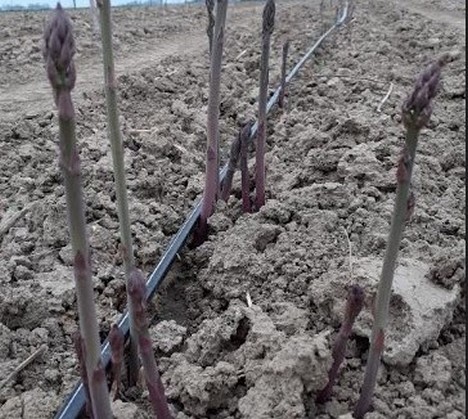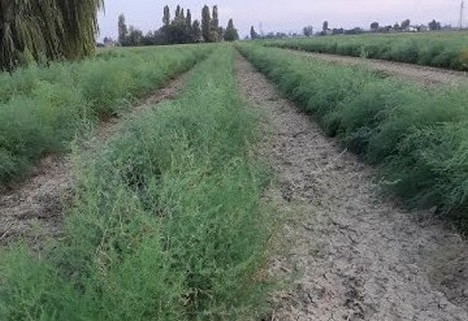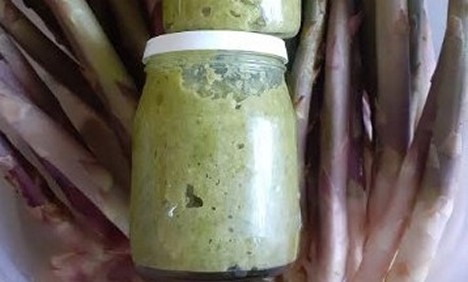Saent – new asparagus for the lovers of distinctive flavors
The Saent asparagus variety, recently introduced by seed company Lamboseeds, is gaining popularity thanks to its unique organoleptic properties. This selection is rather early and has become productive over the past few days, when quantities are still low due to the lack of rain, drops in temperature and frost in both northern and southern Italy.
“Saent is suitable for cultivation in northern Italy. Shoots have medium grades with closed tips highly resistant to withering and a green/purplish red color. It derives from Asparagus officinalis x Asparagus amarus, which is rich in anti-oxidants,” explains Lamboseeds marketing manager Sandro Colombi.

Harvesting of the first Saent asparagus 12 months after planting. The lack of rain over the past few months has forced producers to perform early irrigation operations
The variety is very resistant to the common pathologies that affect the species and boasts a long harvesting period, which can exceed 60 days, i.e. from mid-late March to May-early June. It was developed thanks to Italian research and was selected precisely for the lovers of wild asparagus. Shoots have a distinctive flavor, more bitter than traditional asparagus. “We have been observing this variety for a few years. One of its characteristics is that plants are rustic and vigorous and must be transplanted at a density of around 25,000 plants/hectare,” reports expert Luciano Trentini.

A recent Saent crop a few months after being transplanted. Notice the bushiness of plants deriving from the crossbreed with Asparagus amarus. The layout is rather spacious to improve ventilation for plants, which are rather vigorous
“If the plant layout is spacious, ventilation is good and no chemical intervention is needed against fungi. Asparagus must generally be harvested when the tips are closed and eaten within a short period of time, because they tend to become stringy. Saent should be grown in single rows, as plants tend to spread out making it more difficult to use harvesters.”

An example of the production potential of Saent and its capability to spread out over the years
At home, it must be stored vertically in the fridge at 3-4°C in a container with a couple of cm of water. “Asparagus have very few calories and contain a good quantity of fiber, vitamin C (approximately 20 mg in 100 grams), vitamin A (82mcg) and a modest quantity of mineral salts, calcium, phosphorous and potassium. Eating 100 grams of asparagus also supplies a good quantity of folic acid, guaranteed by the presence of wild asparagus. Considering its distinctive bitter taste, the variety was assessed by panel tests that promoted its high quality. It can be used to make soups, risottos and omelets and, if shoots are young, they can even be eaten uncooked in salads.”
 The variety is suitable for processing
The variety is suitable for processing
“If we consider that asparagus are maybe the first vegetable commercialized in markets and big retail chains, and that they are available only three/four months a year, we have decided with a local partner to extend their availability by preparing pastes and pestos. Over the next few days, when more produce will be available, we will perform a few laboratory tests to assess processing with the objective of supplying consumers with a wider range of products.”